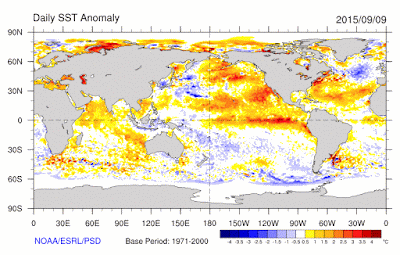Everyone wants to know what will happen this winter, so let's check out the latest almanac forecasts and compare them to our best scientific approaches.
Let's start with the new kid on the block (1818), the venerable Farmer's Almanac.
I studied their online information carefully and hung around the checkout stand a bit to determine their prediction. Bottom line: wet and mild over the Northwest. And cold and snowy in the east. Dry and mild in the southwest. Basically, there are making a persistence prediction, that the coming winter will be similar to last year.
And then there is the relatively ancient Old Farmer's Almanac (established 1792). I guess the additional 26 years lets you use the "old" modifier. Its prediction? Cooler and rainier than normal, with ABOVE-NORMAL SNOWFALL over the Northwest. Good for glaciers. Pretty much the opposite of the predictions of the Farmer's Almanac.
Two respected guides using time-proven secret forecasting schemes getting the opposite results. Disturbing.
So what is the latest from new-fangled, scientific approaches? As I have noted in several blogs, we have a very strong El Nino developing. This is confirmed by the latest sea surface temperatures and atmospheric circulation statistics. As shown by the latest sea surface temperature (SST) anomalies (difference from normal), the El Nino pattern of warm tropical SSTs is in place and importantly for us, the BLOB IS DYING.
El Ninos bring less snow than normal to the Northwest (mountains down about 20%) and more precipitation to California. Warmer than normal over our region. What about the forecasts of the North American ensemble of seasonal forecasts (NMME)--a very powerful tool combining a large number of seasonal forecasting models?
Here is the temperature anomaly from normal (C) for November through January from NMME. Warmer than normal over our region.
Precipitation? A bit drier than normal over us and wetter than normal over California.
Both of these are classic El Nino patterns or what we call teleconnections in the weather biz.
So neither Almanac was consistent with our best technology/science, which predict conditions to be a bit drier than normal and warmer than normal. Less snow than normal, but certainly more snow than last year.
So how can we decide which of these forecasts are right? There are other approaches....


















No comments:
Post a Comment